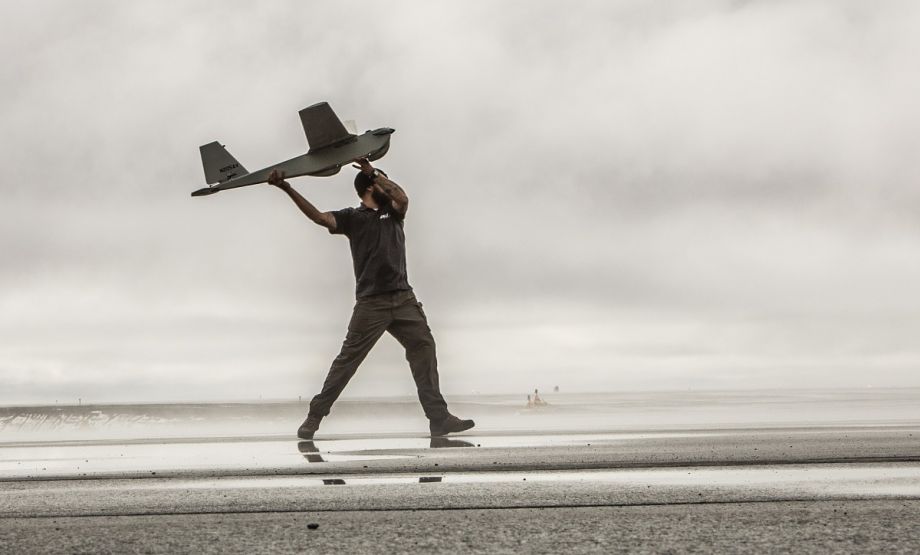Huge sets of data, properly organized and analyzed, have the potential, certainly, to improve the way cities operate and the lives of people inhabiting them. But using this data, as David Burney pointed out at the Pratt Institute and Places Journal symposium “City by Numbers: Big Data and the Urban Future,” is not without risks. “There are some unforeseen consequences,” he said. “It may take us to a place we don’t want to be.”
Connecting the event’s presentations and conversations on personal drones, air pollution, desert cities, self-driving cars in near-perpetual gridlock and data sets so big that “n = all,” the Pratt professor and former New York City commissioner for design and construction said, “Some of it is dazzlingly fascinating, but I noticed all day this undercurrent of anxiety and unease.”
Despite the abundance of Big Data boosterism that’s emerged in recent years, Anthony Townsend, a senior research scientist at NYU’s transportation policy center, pointed out that no one seems to know quite what “Big Data” does or should mean. It very well may be, as the event’s description asserted, “one of the defining phenomena of our time,” but, as Townsend said, “I haven’t had a single conversation where anyone has a precise vocabulary for talking about it.”
However, when it came to one of the meeting’s main questions (as Thomas Hanrahan, the dean of Pratt’s architecture school, put it), “Is Big Data going to help us visualize cities? Does it let us visual the future?,” the assembled architects, designers, planners and academics had plenty of ideas.
The designer James von Klemperer described how data had informed the development of projects like One Vanderbilt, in New York City, and a whole neighborhood in London. In the transportation chain, Townsend noted, every step — vehicles, markets, places, even people — had become, to some extent, programmable. That realization led him to imagine different iterations of the transportation future, which might include everything from a functioning network of solar-powered, self-driving cars to suburban streets abandoned in favor of a data-driven bus rapid transit system.
There were the suggestions, too, on how future city-dwellers might access and create data. “We’re currently on the horizon of an era where we’ll be interacting with our cities much differently,” said Adam Pruden, a Pratt graduate who now works at Frog Design. If right now, there is “one interface that rules them all” — the smartphone — soon, Pruden suggested, in the context of Google Glass and the Apple Watch, the smartphone might seem like an outdated, relatively limited tool. And at Frog, he and colleagues had been thinking about an even more advanced sort of interface.
“Drones are already evolving from smartphones,” he pointed out. Small, personal drones are incorporating phones’ gyroscopes, GPS and battery technologies. “I’m not talking about military drones that attack and shoot missiles,” Pruden said. “I’m talking about quadcopter personal drones. You can kind of consider them flying smartphones.”
This vision of the future involved drones that tether to their owners but fly off to gather information, perform tasks and keep their owners oriented and safe. (It’s not unlike the world of Philip Pullman’s The Golden Compass, in which every human has an animal daemon that has some degree of autonomy but can’t stray too far from its human.) These drones, Pruden suggested, might monitor air quality and serve as a sort of mobile air filter; act as personal trainer by projecting physical games onto the built environment; help people navigate the city; or detect rain and UV levels and, transforming into a whirring, flying umbrella, protect its owner from the elements.
As fun as it might sound to have a flying phone, Mark Shepard, an artist and architect who created the Sentient City Survival Kit, questioned what might be at stake in a future like that one. “As computing leaves the desktop and spills out into the city,” he said, “data processing becomes embedded in urban space. … Few of us are going to take issue with a smart traffic light control system. Some may be bothered by a coupon being beamed to you phone. Many, however, are likely to protest if we are denied access through a subway turnstile when we match the profile of a terrorist.”
Whatever Big Data might be, it’s a lot of information, and its use will depend on who controls it. It’s clear there’s plenty of data out there — enough that urban thinkers can start asking questions like: What happens with that data? Who controls it? Who has access to it? And is it being used to create a city that actually benefits the people who live there?
Personal drones, for instance, might sound like a fun, playful way of interacting with the city, but, as potential interfaces, they’re not as inert as smartphones.
“What happens when drones are fighting with each other?” Shepard said. “When Amazon’s drones are fighting with UPS drones? When drones are wearing Google glasses?”
It’s one vision of the Big Data future of cities — not necessarily the one that will come to pass, of course. Will the future, as heralded by data, be fascinating? Yes. But better? That’s less clear.
The Science of Cities column is made possible with the support of the John D. and Catherine T. MacArthur Foundation.
Sarah Laskow is a reporter and editor in New York who writes about the environment, energy, cities, food and much more.









